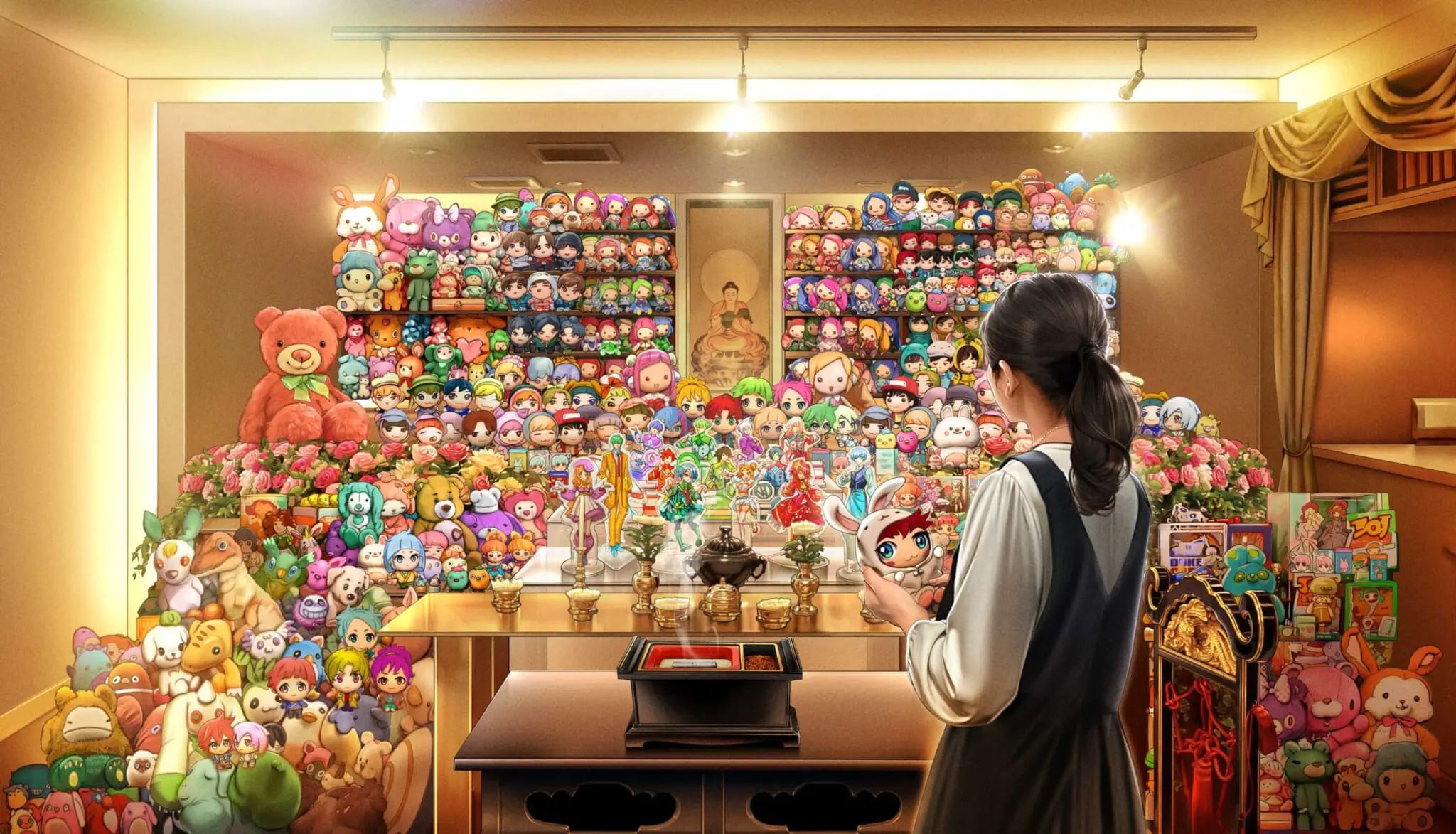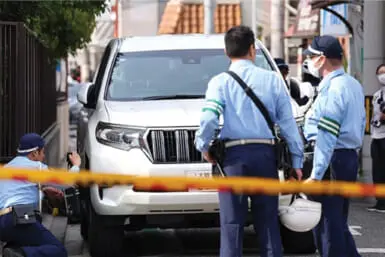Cream Palette, a bakery in Tokyo, bakes nearly 10 cakes every day. Most of these are for people who will never eat them. K-pop fans around Tokyo splash out thousands of yen for an elaborately-baked treat to celebrate their favorite idol’s birthday. “Happy Taeyong Day,” for instance, has become a popular request.
These cakes, though, are rarely for group parties. Generally, they’ll be consumed at a smaller event, attended by the fan and an image of their idol. Just the two of them. Fans may link up over video calls and show their festive set-ups to each other, but the object of their affection will likely never be aware of their existence, let alone that of a personalized birthday cake, made just for them. But why would you spend money on a cake for someone you’ve never met and probably never will? This is oshikatsu culture.
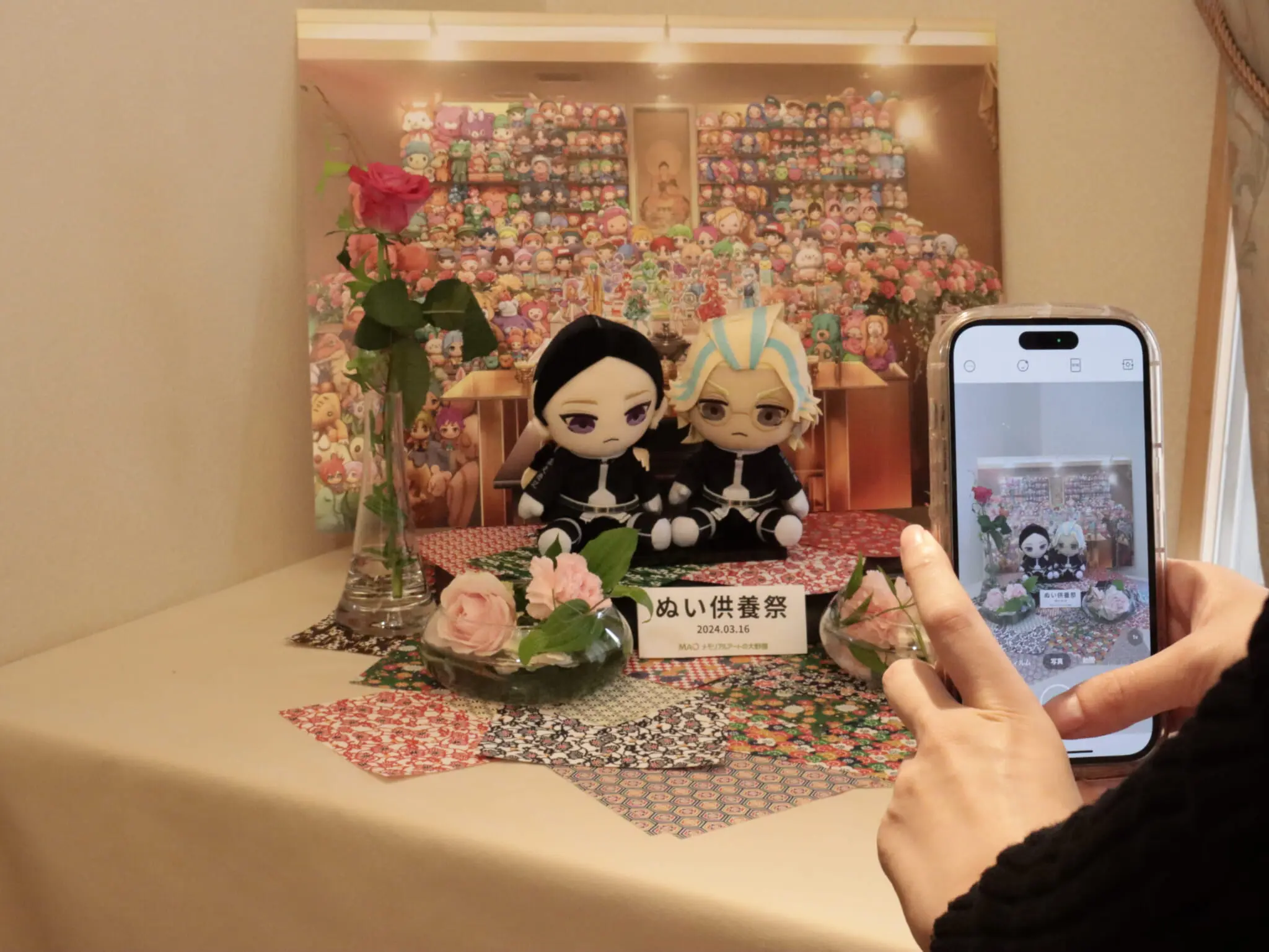
Photo by Memorial Art Ohnoya
What is Oshikatsu?
Oshikatsu is a portmanteau of “oshi,” meaning to push or support, and “katsu,” meaning activity or, in this case, hobby. Oshi is also used to refer to one’s favorite member of a group or series, i.e., “Taeyong is my oshi, so I just had to throw a birthday party for him in my apartment.” Be it a character in their favorite manga, a K-pop group or a popular actor, oshikatsu sees people obsessing over a piece of pop culture. The most serious oshikatsu participants will possess plushies, figurines or even cut-outs of the object of their affection.
What about when those feelings change? Just like falling out of love with a romantic partner, even the strongest bonds can fade over time, and this applies to oshikatsu, too. But without any dialogue, nor any chance for a two-way conversation, how do you achieve closure? One funeral home has come up with a novel solution: the oshikatsu memorial service.
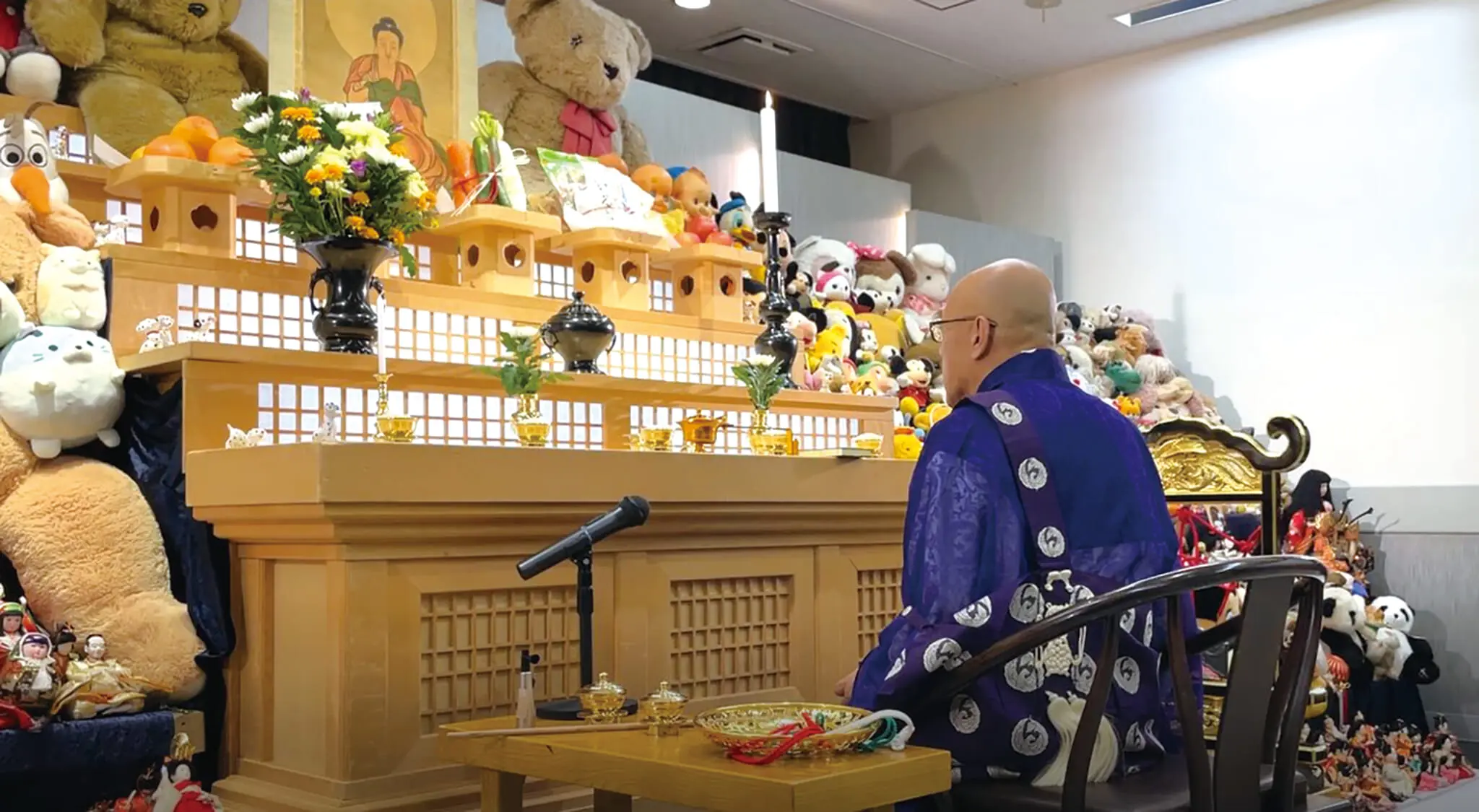
Photo by Memorial Art Ohnoya
Oshikatsu Memorial
Since 2011, Memorial Art Ohnoya, a funeral company based in Tokyo, has been holding memorial services for dolls and plushies, in conjunction with Yakushiji in Nara. The temple, one of the largest in Japan, is known as the headquarters of the Hosso Buddhism sect. Ohnoya and Yakushiji have held many toy memorials, yet this is the first which focuses on oshikatsu. The press release for the event stated that the number of people observing oshikatsu has increased in recent years, which was the motivation for performing a memorial service in the capital.
Much like a pet memorial, the service aimed to provide guests with the chance to say goodbye, allowing them to hand over the acrylic stands or plastic figurines of their favorite idols or characters, to be cremated. This memorial doesn’t only apply to those who’ve fallen out of feeling with their oshi — it also applies to the teddies, plushies and figurines that are broken or have fallen into disrepair.
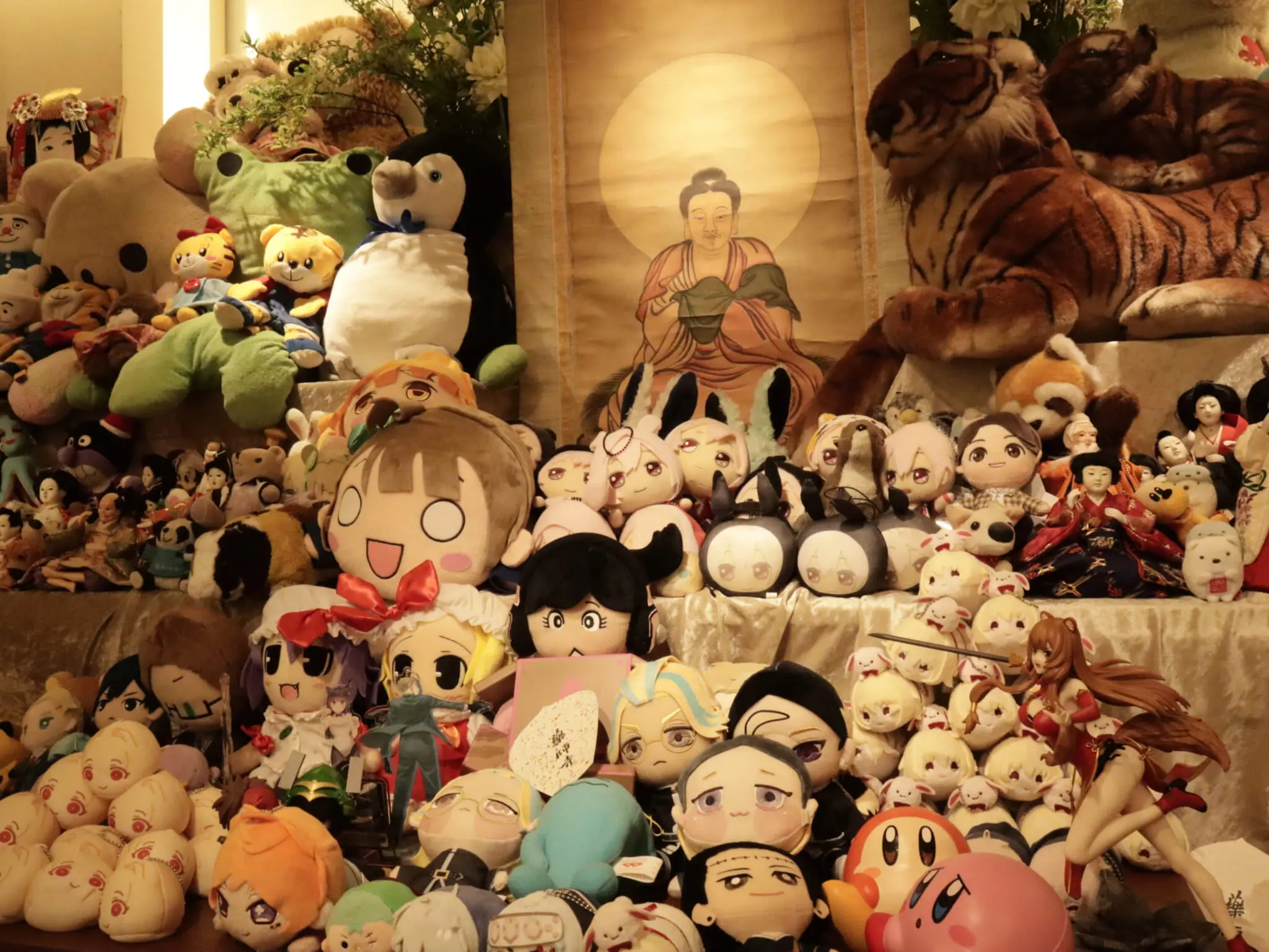
Photo by Memorial Art Ohnoya
The Plushie Funeral Ceremony
The ceremony was held on March 16, and invited its 10 participants to give their beloved figurines the send-off they deserve, with priests traveling over especially for the occasion. Prior to the ceremony, around 700 oshikatsu dolls were also sent to Ohnoya for inclusion in the ceremony. It began at 11.a.m., and lasted for an hour. Participants, who were selected on a first-come-first-serve basis, filed in solemnly, clutching dolls and figures, most encased in boxes provided by the funeral home. Many had taken a final farewell picture in the dedicated photo spot, preparing their effigy for its imminent departure from this earth.
Candles were lit, and the priest said a few words, before participants were led outside to the funeral grounds for otakiage. This is the ritual of burning charms and talismans once their expiration date has passed. Interestingly, the temple chose to refer to the cremation of the oshikatsu figures by this name, too, incorporating age-old Buddhist terminology into the pop culture ceremony.
The ceremony was presided over by Shingyo Goto from Yakushiji, who performed rites over the toys at the Ohnoya funeral home.
The event organizer, Emi Yokota, told Tokyo Weekender that there were a lot more younger people at the oshikatsu service than compared to the general stuffed toy ceremony. “Most of the toys were characters, those from anime and so on,” she said. “At the photo session after the memorial service, participants enjoyed taking final pictures with their oshikatsu goods at the photo spot and at the altar.”

